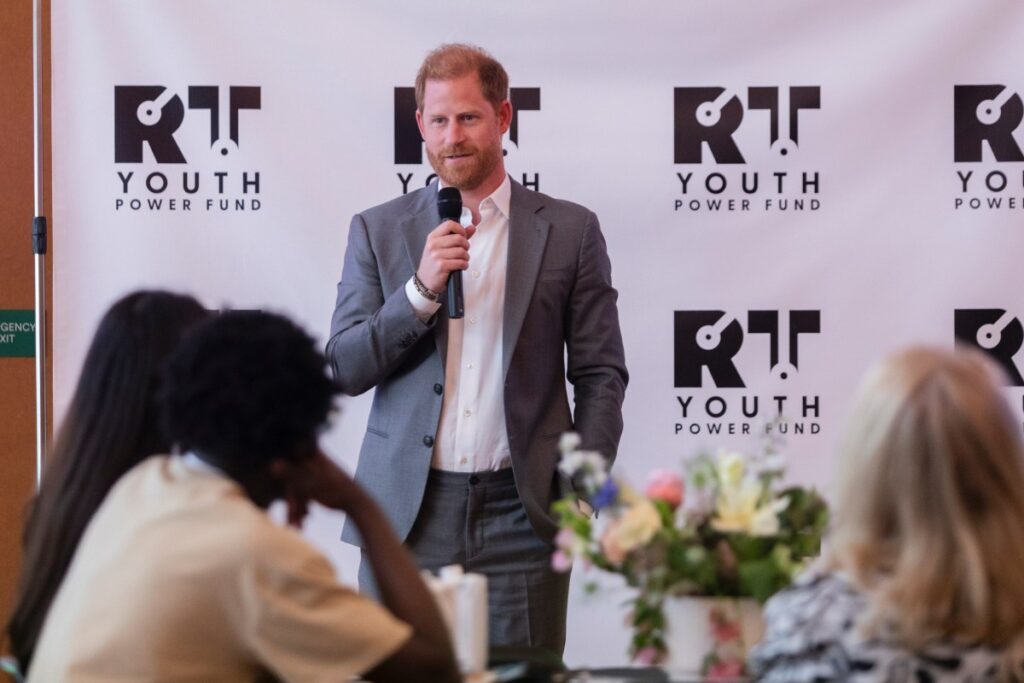Prince Harry Engages Youth Leaders on Technology’s Role in Society
On a sunny Thursday in Brooklyn, Prince Harry, Duke of Sussex, met with a group of young leaders from various backgrounds focused on technology safety and policy. The gathering aimed to address the complex interplay between technological advancements and the well-being of online communities.
A Valuable Exchange of Ideas
Upon entering the hotel conference room, Prince Harry seamlessly integrated with the attendees, who were engrossed in discussions at circular tables. Most were initially unaware of his arrival until he took a seat and began engaging them directly.
Focus on Technology and Community Safety
After interacting with the attendees, Prince Harry took the stage to highlight both the potential benefits and dangers of modern technology. He expressed gratitude for the young activists in the room, emphasizing the significant influence of tech platforms that often surpass governmental authority.
“Thank God you guys exist, thank God you guys are here,” he remarked, stressing that the responsibility to ensure online community safety has been neglected.
The Role of the Responsible Tech Youth Power Fund
The event was organized by the Responsible Tech Youth Power Fund (RTYPF), which is dedicated to supporting initiatives led by young individuals aimed at shaping the future of technology. The Duke’s foundation, Archewell, co-founded with Meghan Markle, contributed funding for the second cohort of RTYPF grantees, partnering with organizations such as Pinterest and Melinda French Gates’ Pivotal Ventures.
Concerns of the Younger Generation
During conversations with attendees, whose average age was around 22, many expressed cautious optimism regarding artificial intelligence while simultaneously voicing concerns over social media’s impact on their lives.
“It’s not that the youth are anti-technology,” stated Lydia Burns, age 27, who leads youth and community partnerships at Seek Common Grounds. “It’s just that we feel we should have more input and seats at the table to talk about how these things impact our lives.”
The Rapid Evolution of Technology
Conversations at the event frequently returned to the pervasive nature of social media. Attendee Adam Billen, 23, from the organization Encode, shared insights on the rapid evolution of artificial intelligence, specifically regarding the potential misuse of technology for creating harmful content.
“As recently as two years ago, it was just not possible for someone without technical expertise to create realistic AI nudes of someone,” Billen explained. “But today, with advances in generative AI, there are apps and websites publicly available for free that are being advertised to kids.”
Addressing Mental Health and Misinformation
Concerns about mental health linked to social media usage were prevalent among participants. Yoelle Gulko, aged 22, noted that many individuals are choosing to delete their social media accounts in response to feelings of helplessness.
“Young people shouldn’t be left to fend for themselves,” she said, advocating for the provision of tools and resources to navigate the online ecosystem effectively.
Empowering Youth for Change
Attendees articulated a desire to have a more significant role in shaping technology policies. Leo Wu, age 21, founded AI Consensus to encourage dialogue between students and tech professionals on effectively integrating AI into education.
“Is it a teenager’s fault for being addicted to Instagram? Or is it the fault of a company that is making this technology addictive?” Wu questioned, underscoring the responsibility of tech companies.
A Call for Collaboration and Regulation
Many young leaders at the event are actively advocating for regulatory changes. Generation Patient’s Sneha Dave is pushing for collaboration between the FDA and FTC to mitigate misinformation regarding prescription medication advertisements on social media.
The collective sentiment was clear: youth wish to be recognized as critical stakeholders in discussions surrounding technological impact and regulation. “The people in this room,” Wu concluded, referring to his fellow attendees, “are the solution.”
